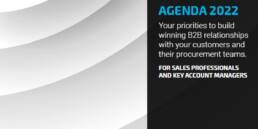I was travelling for leisure in India a few years back and happened to get in touch with a local business owner in the south of the country. He had a small factory that produced doormats out of coconut fibers. I was there in August and it was 38oC with what felt like 100% humidity. We started talking about his business and he ended up showing me his small factory.
I was intrigued to see that his doormats were actually produced for an American retailer. The designs clearly showed some winter motives and the labels indicated a US based wholesaler.
What struck me immediately were the poor working conditions. No protective gear, no face masks for the workers, despite the toxic and incredibly acidic smell of the paint and the fine dust coming from cutting the coconut fibers. Workers were bare foot and had their lunches directly next to the spray-painting area. A proper cleaning system for waste and waste water was not in place.


Looking at the pictures you might say that you have seen worse conditions on TV and maybe for local standards this operation was actually fairly acceptable. And I am quite sure that my Indian friend did abide by all applicable local laws.
But is true sustainability just about meeting local laws? Local laws which by the way vary around the world? I don’t think so.
I am certain that all customers who opened their door over Christmas that year to family members standing on this very doormat would have not approved of the conditions in which this item was produced. They obviously did not know that their very doormat was putting workers’ health at risk and harming the environment. What would their reaction have been if they had known? What impact would their reaction have had on the product retailer?
The era of a new customer
The behaviors and attitudes of end consumers towards the products they buy have completely changed over the past 5 years. Let’s just take our own personal shopping behaviors for instance, how you and I buy and consume products and services today.
- We are very well informed and make decisions not merely any longer on price and brand reputation but predominantly on other people’s (mostly total strangers’) feedback, e.g. through Trustpilot, TripAdvisor, etc.
- We are no longer that customer that companies can keep at arm’s length and waiting on a customer care line for 30 minutes. We speak up, we want replies to our answers and we want change instantaneously. If we don’t see it, you will get feedback and that 1 star rating on social media.
- We do value true sustainability and challenge companies on their practices. Ultimately, we demand a sustainable and transparent supply chain and not some ‘green wash beach plastic’ campaign. A service or product that is actually produced and delivered in the right way. No harm to the environment, decent working conditions, equitable, fair, and by the way, it does NOT need to come at the cheapest price!
These are the new prevailing trends. And they also apply to your customers at your company.
“Ok, got it, but I am in procurement, Jens! I am a professional buyer. I deal with suppliers. Why should I care about the end customer?”
Ok, let’s look into what modern procurement must do in today’s new world.
When the professional procurement discipline was formally set up in the 80s, the primary focus was on generating savings and controlling cost for the organization.
It seems that for many procurement functions, the 80s agenda has become a stone engraved dogma and has never really adapted to changing market demands. I am not disputing the fact that cost reduction and assuring supply is of utmost importance to our companies and hence paramount that it is managed well. But there is much more that we as procurement professionals can and should do to drive value for our stakeholders and particularly the end customer! Yes, the end customer with their needs and requirements, that is who we need to concentrate on as a function to justify our existence in our organization. Any company that is not through and through customer centric will become obsolete and go under. Fact! As procurement we cannot dismiss this development and should see this rather as stellar opportunity to further develop our discipline.
Let’s stop ignoring the end consumer. We tend to feel comfortable as procurement professionals with our financial targets and KPIs provided by whoever we report into and thus not having to stay abreast with generation XYZ and what our strategy, actions and priorities should be to meet their needs and expectations. “The consumers? Marketing takes care of them.” – Eh, no!
Taking the lead on sustainability we must!
Let’s break with the old stone plates from the 80s and develop a customer centric procurement strategy! As procurement professionals, we are best positioned to take the lead on sustainability! Let’s take the initiative, assume responsibility and consult, advise, direct our leadership teams on how to address a fundamental need of our end consumers, namely true sustainability. A need that, if addressed appropriately, will drive sales and enable growth for the organization long term.
We will continue to look into cost optimizations. Spend management is our job and we will do it right. What needs to change is our attitude towards serving the end customer and hence at times challenging our internal stakeholders to do what is right. Is a doormat that is sustainably sourced and produced, that keeps local workers safe not a success story that can be marketed accordingly? Is every stakeholder aware of the potential risks if working conditions for a certain product and service were actually exposed to the public? Would not a significant portion of customers start boycotting the respective American retailer after becoming aware of the production conditions in India? One exposed issue in the supply chain can ruin your reputation overnight thanks to social media.
Why should procurement drive the sustainability agenda?
The fact of the matter is, we know our supply chains, we know our suppliers and we have access to their production sites. We know where the issues are and we have the skills, the commercial acumen, and the connections to make a difference.
As procurement professionals, we are the risk gatekeepers for the organization, the ones that see what happens at our suppliers first, how they operate, what standards they do or do not comply with, what the conditions are like on the ground. We need to be the customer’s advocate and say ‘no’ to a supply chain setup that might yield the highest financial return (short term) but is not truly sustainable. This will create friction within your organization but will lead ultimately to a better decision making process within the company.
“Love it, Jens. How can I get started and make a difference with my procurement team?”
First, create the environment of customer centricity within your team. Instill the mindset of business ownership. Empower your team to challenge status quo and allow them to ask ‘why’. E.g. “Why are we buying from this supplier? Why have we never visited the production site?” Move away from an all encompassing savings target philosophy towards an attitude of awarding initiatives that truly drive sales and enable growth sustainably.
Second, create customer centricity with your internal stakeholders. Understand them and help them understand your strategy and vision and how those link in with the overall strategy of the company. Healthy debate on how to service the end customer best as an organizationis always of value. Enter into this dialogue!
Third, spend time with your suppliers and build external business partnerships. We have the power to develop and change whole industries to the better if we collaborate and think long term. Don’t shy away from pointing the fingers to issues and outages in the supply chain. Change starts always with a customer’s request. Well, your request because you are the customer’s advocate.
Where was procurement in India?

Quite frankly, I do not know. There must have been a procurement person buying these doormats, visiting the production site (or not) and turning a blind eye to what I had seen. This procurement professional was certainly still stuck in the 80’s agenda of delivering a product at the cheapest price possible. Health and safety standards? Who cares – the American dollar shop were the mat will end up will not ask and neither will their customers. Wrong! The customer’s mindset has changed – to the better. Sustainability and ethical sourcing are on the top of people’s mind and rightfully so. Let’s embrace it and drive the agenda as procurement professionals! Because we can do it best!
Written by Jens Hentschel, Founder & CEO of THE FIVIS PARTNERSHIP. The Consultancy That Gets You Your Oomph Back. Find out more at www.fivis.io.


